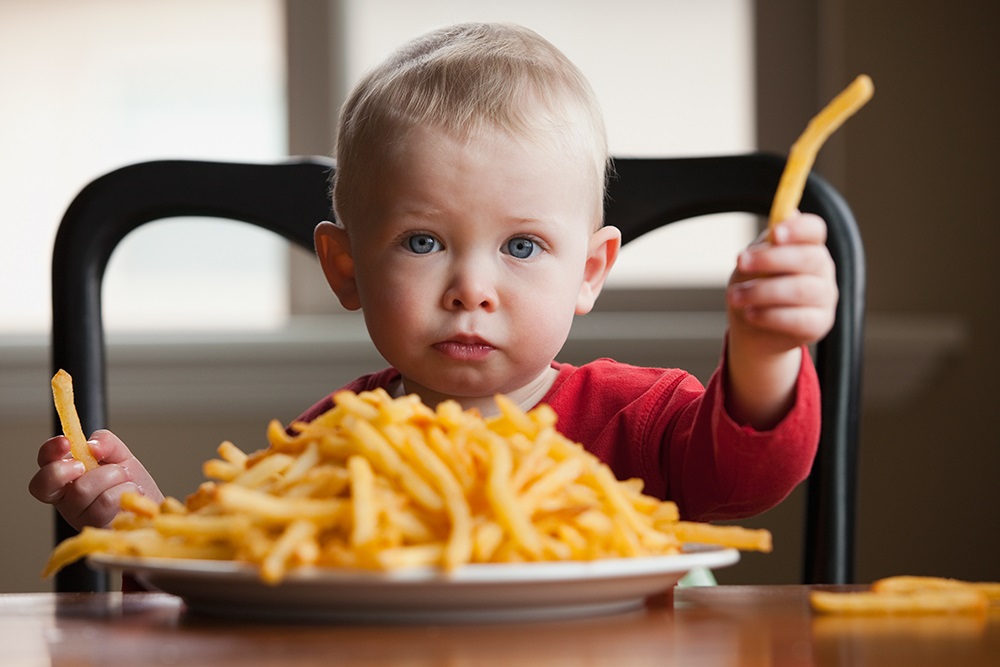Proper nutrition is often an obsession for parents with children who have just started on solids. Life was certainly so much easier when they thrived on nothing but milk.
Feeding newbie eaters can be frustrating. While you’re dealing with fussy toddlers, you’re also filtering through the numerous feeding tips that you encounter along the way.
There is a lot of information out there on how and what to feed toddlers. Some are hard facts. Some carry enough credence to be given a shot. And some are nothing more than myths.
Food Misinformation 101
Ensuring that your children eat healthy can be a challenge. Being confused by the plethora of varying and sometimes contradicting recommendations doesn’t help.
To weed out some of the false information, here is a list of claims you should take with a grain of salt.
1. Commercial/homemade toddler food is better.
One side claims homemade is healthier and more wholesome, while the other side claims that jarred is more fortified and convenient. Both are actually good for your children. Either way, you can provide your kids with the nutrients they need.
It is, however, a good idea to let your toddlers gradually start sharing your meals, provided you serve the rest of your family healthy, whole foods. It’s also a good idea to have jarred food on hand for days when you don’t have the time or the energy to prepare something specifically for them.
2. Regular consumption of red meat and eggs is not healthy for your toddlers.
They may not be healthy for you, but it’s not an issue for little kids. They’re a great source of protein, iron, and zinc, which are all nutrients essential to toddlers’ growth.
There is some caution necessary pertinent to feeding them eggs. Make sure that the yolk is well cooked, and you may want to hold off including the whites if an allergy is a possibility.
3. There’s no point serving your toddlers something they already rejected.
Studies indicate that you may have to expose toddlers to a new food 15 times before they’ll deign to sample it. They’re still trying to figure out what they like and don’t like. They also tend to be suspicious of anything new.
Just keep on serving it to your family. Your toddler will get used to seeing everybody else enjoy it and will one day have enough courage and curiosity to try it.
4. Introducing fruits first will prejudice them against vegetables.
There’s no evidence that giving them fruits first will get them so spoiled for the sweet taste that they’d be unwilling to try vegetables. Toddlers can appreciate different flavors. Just make sure that you introduce any new food patiently, allowing them to gradually get used to it.
5. Packaged vegetable chips or crackers are healthier than the regular kind.
Don’t be fooled by the presence of the world vegetable on the packaging. A sprinkling of kale or peas wouldn’t necessarily make something better than regular potato chips.
Make sure to inspect the list of ingredients and determine how the product was prepared. You want to stay away from anything with chemical additives like preservatives and food color.
If you really want to give your children vegetables, fresh and whole would be the way to go.
6. Multigrain is healthier.
This is not always true. A variety might offer more nutrients than a single grain, but a product’s merit really goes down to preparation.
Have the grains involved been refined? You don’t want that. You’re looking to give your toddlers whole grain products, which are composed of the original kernel with germ, bran, and endosperm intact. This is where your children derive the fiber, protein, vitamins, and minerals that their bodies need.
7. Low-glycemic foods are healthier for children.
High-glycemic foods raise blood sugar quickly. They easily convert into glucose, which then converts to energy. They may pose a problem for older people with weight issues, but that’s usually not the case for an active toddler.
So many high-glycemic foods like papaya and beets are packed with amazing nutrients. Don’t let your kids miss out on them because you’re worried about their blood sugar. Moderate amounts typically shouldn’t harm them.
8. Fresh fruits and vegetables contain more nutrients than frozen.
It’s always better to eat fresh. On the matter of nutritional value, however, there are considerations involved, so it’s possible for fresh and frozen to be equal.
In-season and ripe produce are at their nutritional peak. Frozen fruits and veggies are fortunately usually picked and packed at their ripeness, so they’re very healthy too, provided that no additives contaminate them.
The recommendation is to buy fresh and local when you can and then slice them up and freeze them yourself. If frozen is your only option, choose those without any preservatives.
9. Some vegetables are unhealthy or pretty much useless.
You may have heard people dismiss cucumber and celery as just water, cabbage as a filler, carrot as too sugary, herbs as just flavor and garnish, potatoes as too fatty, and so on. All these happen to carry important nutrients in them.
They may not be as healthy as dark green leafy vegetables, but they still have a lot of good stuff to offer and they deserve room on a wholesome plate.
10. Toddlers don’t need supplements.
In an ideal world, children would get all the nutrients they require just from the food they consume, but the reality is that many children fall short on at least one mineral or vitamin.
If you want to make sure that your toddler is covered, ask your pediatrician to recommend a food supplement.
Determining Fact from Fiction
Parents face a sea of information on children’s nutrition. Advice may vary and even change completely over time. Keep yourself up to date on this topic and talk to your doctor for an official diet recommendation for your children.




